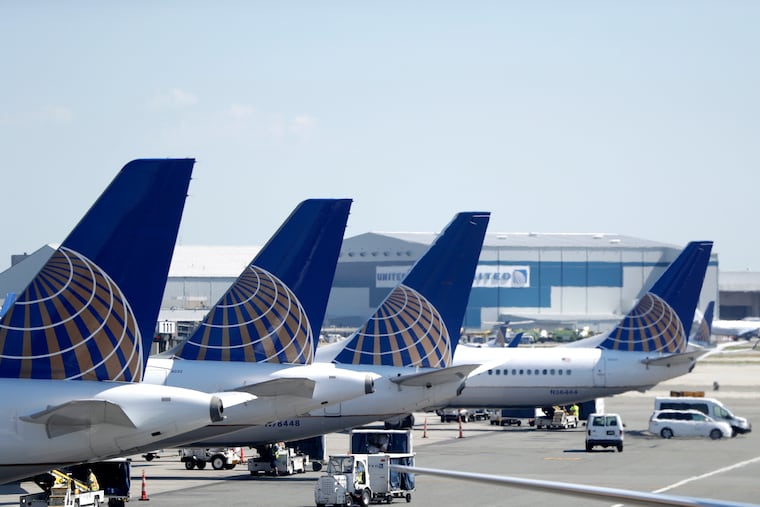Airlines face crucial test this summer in quest for profitability
Planes will be packed because flight capacity is well below 2019 levels, in part due to crew shortages.

Too few pilots. Not enough flights. Jammed planes and higher fuel costs.
Those are just a few of the challenges U.S. airlines will face as this year’s summer travel season swings into full gear. A surge in demand will test their resiliency as they seek to return to profitability and move past the pandemic that crippled the industry the last two years.
Carriers say they’ve taken steps that leave them well-prepared to cope with any hiccups, but early signs aren’t great. Already this year, the rate of flight cancellations is six times what the airlines target.
Travel demand has rushed back faster in the United States from the pandemic collapse than in any market globally, and the number of passengers flying over the next three months could exceed pre-COVID-19 levels. Planes will be packed because flight capacity is well below 2019 levels, in part due to crew shortages. That combination creates a precarious balance, and disruptions from summer storms, computer glitches or other sources could strand passengers with little hope for a quick fix.
"Airlines are doing everything they can to sell every seat on every flight," said Henry Harteveldt, an industry analyst and founder of Atmosphere Research Group. "All it takes is one bad storm somewhere to throw an airline off track, and there is very little wiggle room left within the airlines and very little wiggle room for the airline industry as a whole."
Carriers are desperate to avoid the types of snarls that hit last year, most initially triggered by weather but worsened when airlines that had ramped up flying too quickly didn't have enough crews or planes to recover and avoid widespread cancellations. Spirit Airlines Inc. had a miserable 10 days in August, canceling 2,826 flights and enraging thousands of passengers. Southwest Airlines Co. dropped nearly 3,100 over four days in October, and American Airlines Group Inc. scrubbed 1,900 over a weekend later that month.
Through May 22 this year, a group of seven major carriers had canceled 3% of flights, according to data tracker FlightAware.com, above the normal industry target of holding cancellations to between 0.3% and 0.5%. That compares with a 1% cancellation rate for summer 2021, when 12% of flights were delayed an average 42 minutes.
“All the airlines and support businesses have adjusted their staffing appropriately and we have, as well,” said Ted Christie, the chief executive officer of Spirit.
An early test for U.S. airlines comes this month when about 12.4 million people are expected to fly during the four-day Memorial Day weekend, which kicks off summer, compared with 8.9 million screened by the Transportation Security Administration over last year’s holiday period, according to travel search engine Hopper Inc. The number of daily fliers over the full summer could at times hit 3 million a day, surpassing a former high of 2.8 million, the American Association of Airport Executives forecast earlier this month.
At the same time, capacity will be 8.3% below 2019 levels in June on domestic routes flown by the six largest U.S. airlines, according to data from Cirium. It will be down 6.6% in July and 4% in August. Flights have been trimmed for a number of reasons, including a shortage of pilots. Others have been grounded because rising fuel prices made some flights too expensive to operate.
American completed hiring and training for the summer in early May, well ahead of its usual schedule, chief operating officer David Seymour said.
Carriers including American and United Airlines Holdings Inc. are eager to have strong summer operations as they take advantage of the burgeoning demand and rising fares to end pandemic-related losses. The largest U.S. airlines had net losses of $35 billion in 2020 and $2.8 billion in 2021, according to Airlines for America, their lobbying group.
Airlines say they've trimmed flying to just what they have staff to operate, after ramping up hiring for jobs ranging from cockpit and cabin crews to baggage handlers and call center workers. They're replacing thousands who left their jobs during the downturn.
Although a poor performance this summer likely won’t quell the desire of Americans to fly, carriers do risk a loss of customers and revenue, as well as the risk of reputational harm, Harteveldt said.
"That's really what airline executives are clearly looking at," he said. "They recognize there is a very real risk of losing market share and losing any revenue premium they may be able to command if they don't do a good job."
One positive dynamic for the carriers is that with demand exceeding supply, they've been able to boost fares. Domestic ticket prices jumped 18.6% in April from March, the biggest such increase since the US Bureau of Labor Statistics started tracking the numbers in 1963. Prices were up 33.3% year-over-year that month, the most since at least 1990. For the summer, leisure fares are up about 25% from pre-pandemic levels, and 50% higher than last year, according to Hopper.